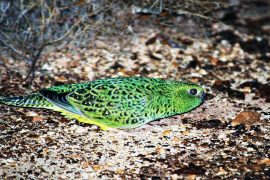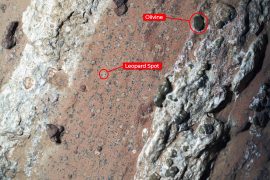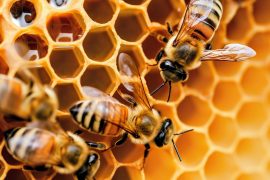
Are Turtles Reptiles?
Reptiles first walked the earth about 300 million years ago and have since diversified into over 10,000 extant (living) species. These animals live on six continents on earth, in a variety of bizarre and unique locations. Lizards, snakes, crocodiles, and caimans are all reptiles – but are turtles reptiles?
What Are Turtles?
All turtles have a few things in common. First, they evolved during the Middle Jurrasic period about 160 million years ago. Additionally, they also all have a ‘shell’ of some kind. For some turtles, this is a classic hard, bony shell and for others, this is a relatively soft shell.
Secondly, let’s clarify some terminology. What exactly is a turtle? Turtles all fall into the order Testudines. They are on the same level of biological classification as marsupials (kangaroos, opossums), carnivores (wolves, hyenas), and cetaceans (whales, dolphins). All turtles fit into one of two suborders: cryptodirans or pleurodirans. The distinction lies in the manner that each suborder covers their head and neck. The former simply pulls their head straight back into the shell. The latter need to turn their head to the side to retract it into the shell.
Types of Turtles
From there, 14 families of Testudines exist today. Let’s take a look at some of the more well-known examples.
- Cheloniidae: This family, commonly known as “sea turtles,” includes five genera with six species. When conservation groups protect seashores in the name of turtles, they’re typically protecting members of Cheloniidae like loggerheads and green sea turtles.
- Chelydridae: Anytime you hear of a turtle being referred to as a ‘snapping turtle’, it’s probably in reference to one of the five species of Chelydridae. One of the largest species of Chelydridae is the alligator snapping turtle (Macrochelys temminckii), which can weigh up to 100 kilograms (220 lbs).
- Dermochelyidae: One species of sea turtle is very different from Cheloniidae: the leatherback sea turtle. As its name implies, the leatherback can be differentiated from other sea turtles by its lack of a hard shell. Instead, it has an oily skin on its back. These turtles can grow to be over two meters (seven feet) long and weigh over 900 kilograms (2,000 lbs)!
- Emydidae: The roughly 50 species of Emydidae are sometimes referred to as terrapins. Collectively, they make up the freshwater and pond turtles. Typically, pet stores will sell any number of the species of Emydidae.
- Testudinidae: Contrary to popular belief turtles are not tortoises- it’s the other way around. In reality, all tortoises are turtles. Tortoises are simply members of the family Testudinidae within order Testudines.
What Are Reptiles?
Now that we understand where turtles fall in terms of biological classification, let’s turn to reptiles. During the carboniferous period roughly 300 million years ago, the first pseudo-reptiles called reptiliomorphs evolved on earth. This group of organisms slowly adapted to living on dry land, as opposed to partially in water like their ancestors, the amphibians.
Reptiles are all marked by a few specific features. Let’s take a look.
- Cold-blooded: there are many different ‘ways’ for an organism to be cold-blooded: ectothermy, poikilothermy, and bradymetabolism are just a few. All reptiles exhibit some form of this, meaning that they do not have total control of their internal body temperature and utilize external sources to make up for this fact.
- Lungs: all reptiles breath using lungs. This is a significant difference between amphibians and reptiles. Amphibians evolved a variety of ways to breathe without lungs, sometimes even diffusing air through their skin. While we know that turtles have lungs, expanding them with a hard shell is difficult. During periods of hibernation, some species of turtles actually submerge themselves in water – how can they breathe with lungs? Turns out, turtles utilize a form of respiration known as cloacal respiration. Essentially, they pass oxygenated water across body surfaces that contain many blood vessels.
- Skin: reptiles are also marked by a watertight skin that falls between amphibian skin and mammalian skin in terms of toughness. Unlike amphibians who need to breathe through their skin, reptiles live primarily on dry land, only going into the water when necessary. Unlike mammals, their skin isn’t nearly as thick, and thus offers less protection.
Are Turtles Reptiles?
All turtles are reptiles! In fact, turtles are some of the oldest reptiles still living on planet earth. They evolved around 220 million years ago – only 80 million years after the very first reptiles. Turtles make up a unique order in that their habitats vary widely. Some turtles, like the green turtle (Chelonia mydas), have been shown to migrate over 3979 kilometers (2500 miles) across open ocean! Other turtles, like the Aldabra giant tortoise (Aldabrachelys gigantea) live their entire lives almost exclusively on land.
Turtles are part of a unique group of animals that are survivors – species and families that have stood the test of time. Not many other organisms that are complex as turtles have been around for as long. But current trends in pollution, habitat destruction, and irresponsible land use continue to put these and other animals at risk. Almost every species of turtle is listed as endangered by the World Wildlife Foundation. Consider contributing to organizations that help protect the habitat and resources necessary for turtles to fight for their survival.
Check us out on EarthSnap, a free app brought to you by Eric Ralls and Earth.com.
News coming your way















